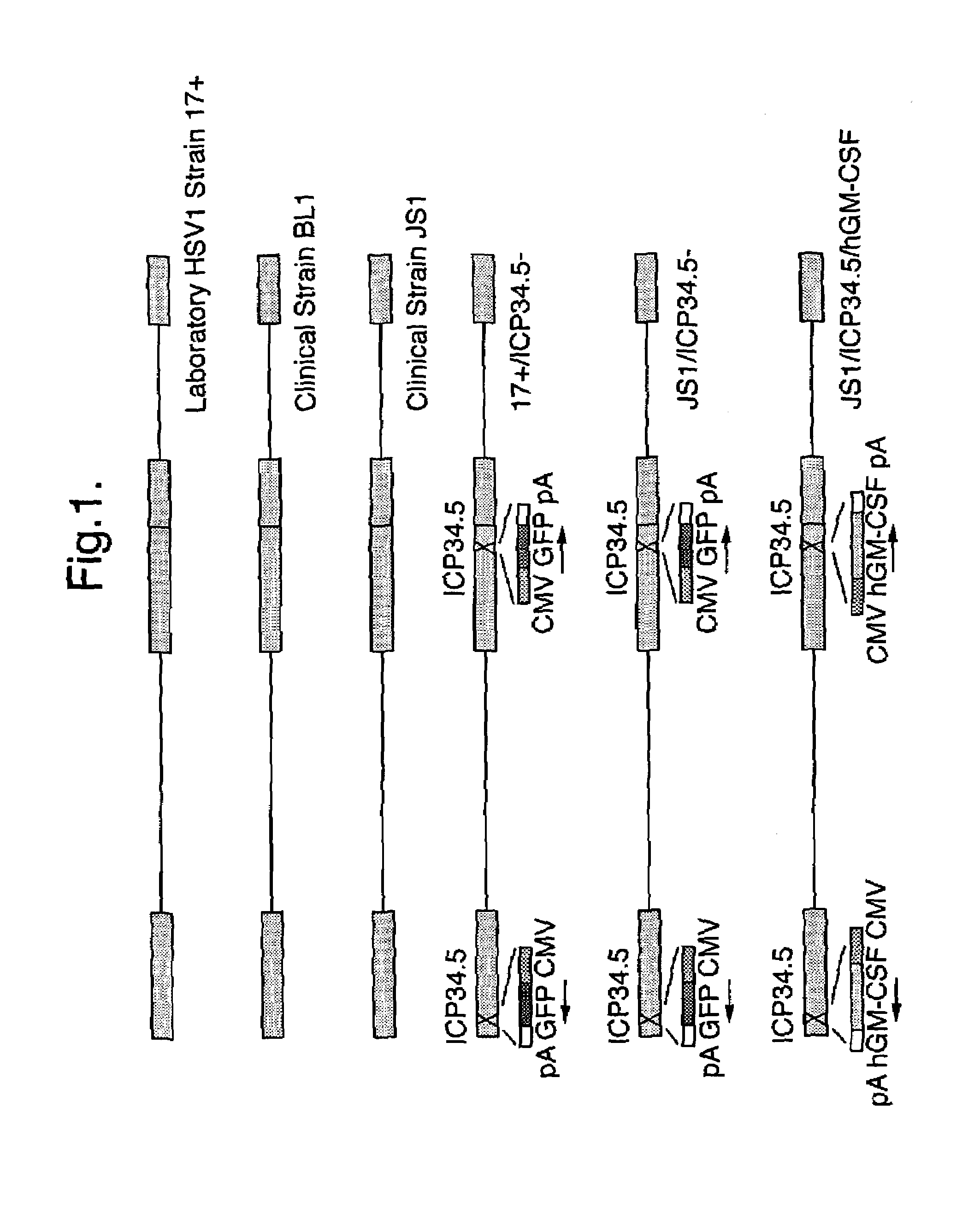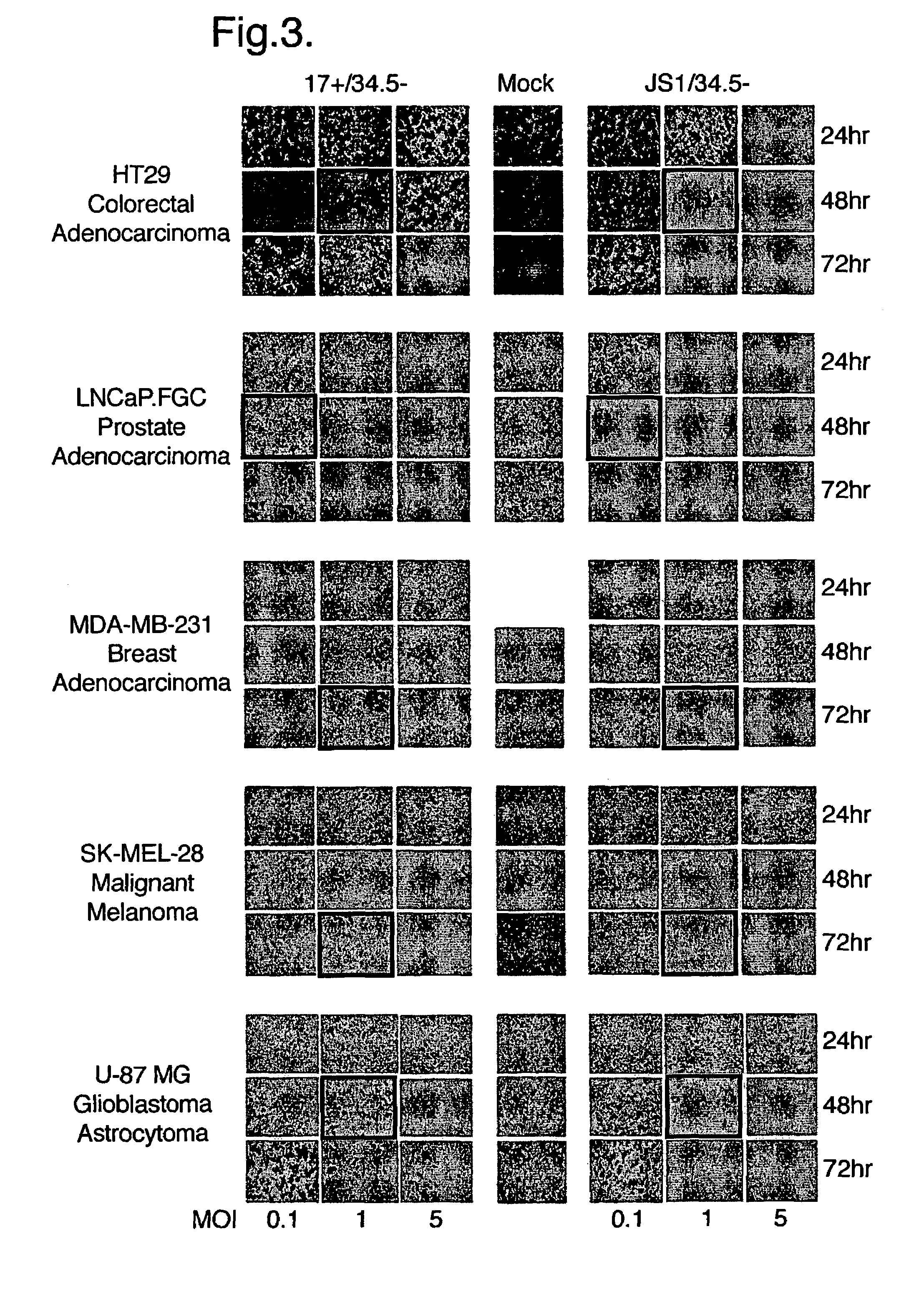Virus strains
- Summary
- Abstract
- Description
- Claims
- Application Information
AI Technical Summary
Benefits of technology
Problems solved by technology
Method used
Image
Examples
Embodiment Construction
A. Viruses
Virus Strains of the Invention
[0074]The invention is applicable to viruses in general. Preferably, a virus strain of the invention will be a strain of a herpes virus, adenovirus, picomavirus, retrovirus or alphavirus. More preferably, a virus strain of the invention will be a strain of a herpes virus. Still more preferably, a virus strain of the invention will be a strain of a herpes simplex virus (HSV), typically a strain of HSV1 or HSV2.
[0075]When the virus of the invention is a herpes simplex virus, the virus may be derived from, for example HSV1 or HSV2 strains, or derivatives thereof, preferably HSV1. Derivatives include inter-type recombinants containing DNA from HSV1 and HSV2 strains. Such inter-type recombinants are described in the art, for example in Thompson et al (1998) and Meignier et al (1988). Derivatives preferably have at least 70% sequence homology to either the HSV1 or HSV2 genomes, more preferably at least 80%, even more preferably at least 90 or 95%. M...
PUM
| Property | Measurement | Unit |
|---|---|---|
| Time | aaaaa | aaaaa |
| Time | aaaaa | aaaaa |
| Time | aaaaa | aaaaa |
Abstract
Description
Claims
Application Information
 Login to View More
Login to View More - R&D
- Intellectual Property
- Life Sciences
- Materials
- Tech Scout
- Unparalleled Data Quality
- Higher Quality Content
- 60% Fewer Hallucinations
Browse by: Latest US Patents, China's latest patents, Technical Efficacy Thesaurus, Application Domain, Technology Topic, Popular Technical Reports.
© 2025 PatSnap. All rights reserved.Legal|Privacy policy|Modern Slavery Act Transparency Statement|Sitemap|About US| Contact US: help@patsnap.com



